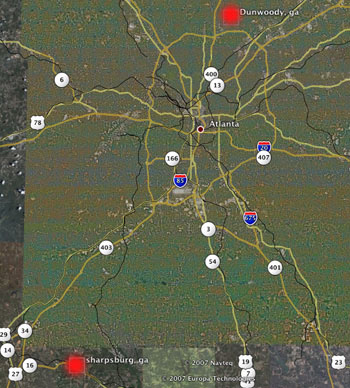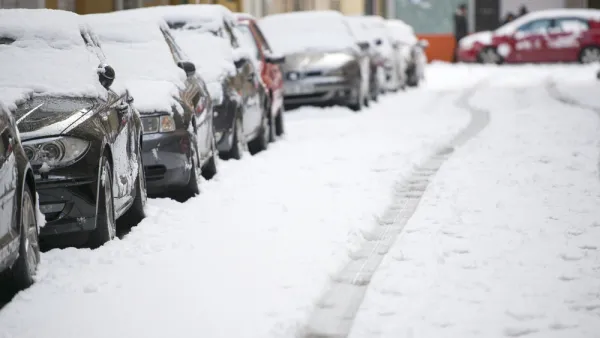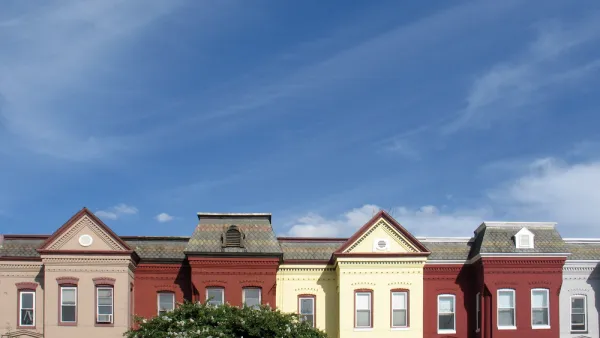This week, a few stories circulated around our office that generated some discussion. One was a piece in The New Yorker by Nick Paumgarten on commuting in America entitled "There and Back Again". The tease at the beginning sums up the entire piece: "People may endure miserable commutes out of an inability to weigh their general well-being against quantifiable material gains."In this story, the writer accompanies commuters in Manhattan and Atlanta while attempting to understand the life of an "extreme commuter."
This week, a few stories circulated around our office that generated some discussion. One was a piece in The New Yorker by Nick Paumgarten on commuting in America entitled "There and Back Again". The tease at the beginning sums up the entire piece: "People may endure miserable commutes out of an inability to weigh their general well-being against quantifiable material gains."
In this story, the writer accompanies commuters in Manhattan and Atlanta while attempting to understand the life of an "extreme commuter." While massive state and national subsidies for road-building and new construction at the fringes of our metropolitan areas have no doubt enabled the growth that has sprawled out from our major cities, one also cannot look past our desire for the "good life". But are we really grasping hold of the "good life" when parents have to leave their homes at 6 a.m. and return after dark, just for their slice of the American Dream? Is the societal cost of that lifestyle part of the dream? As our staff wrote in this week's Smart Growth America newsletter, this illustrates the "psychological sleight-of-hand we perform on ourselves in accepting a life in automotive purgatory in exchange for the material signifiers of 'the good life'".
One story provided in the New Yorker piece is a man who commutes from Sharpsburg to Dunwoody, which you can see on the map below. (Sharpsburg is so far away it's not even on Google's high-resolution Atlanta-area map!) His wife laments the effect on their family. "He works eight to five but is gone from six-thirty to seven. I can't rely on the fact that he'll even be here."

More than 3.5 million people (growing every day, according to the Census Bureau) endure commutes of 90 minutes or more each way, but there is a flip side to the growing phenomena of "extreme commuters" that has become quite familiar to us. Many cities in America, including Atlanta, are experiencing rebirth as people are returning to forgotten and neglected city centers.
People are now realizing the social impact of spending 3 hours in the car each day for extra square footage and are looking for places to live where working, shopping, walking, or biking in their immediate area is an option. So "stripes" of wealth are emerging as these city cores experience new population growth and urban living becomes a luxury good in some places. While some cities continue to add population-often wealthy and upwardly-mobile-the poor who inhabited the forgotten city neighborhoods are being pushed out into older first-ring suburbs, leading to a pattern of wealth in the city-and in the far suburbs and exurbs-with the poor often trapped in between.
The Brookings Institution publicized this massive shift in the demographic makeup of our metro areas, announcing a milestone finding in the history of our country last year: For the first time, more impoverished Americans reside in the suburbs than in all of our cities combined. Unlike the cities they surround, many of these older suburbs don't have access to adequate public transportation, lying just out of reach of bus lines or rail lines. Many are in dire need of infrastructure upgrades to replace crumbling school buildings, roads, or even basic amenities like sidewalks or crosswalks.
The common phrase is "drive 'til you qualify", but in Atlanta, along with other similar cities, there certainly is a surplus of houses and land in the inner-ring suburbs, though conventional wisdom is that they are old, or out of date, inhabited by "different" people, and in failing school districts. This perception may be accurate in some places, but 55-mile commutes across Atlanta, however, are hardly required to find adequate housing.
I often wonder why it is that we don't hear more criticism of the effects of sprawl from supporters of "family values." There is unquestionably a massive impact on the family when a commute reduces a parent's time with family to a few minutes in the morning or evening and weekends. At the same time, policies that incentivize far-flung sprawl while passing over existing inner suburbs seems neither conservative nor supportive of families.
While it is easy to speak of the flaws of the exurbs, it's much more exciting to think about the massive potential for success in these older neighborhoods. Reinvesting in our older historic suburbs will be one of the greatest challenges of the next 30 years as we try to address mounting poverty while also providing urban living options near our cities-becoming ever more urgent as mobility in the outer suburbs becomes more difficult and more people awaken to the staggering financial and societal costs of "extreme commuting".
Those of us who care about smart growth must care first about maximizing our current investments. These investments extend beyond our city cores and must include the remaking of our historic, older suburbs into wonderful, livable places with access to jobs, basic needs, transit - and opportunities.

National Parks Layoffs Will Cause Communities to Lose Billions
Thousands of essential park workers were laid off this week, just before the busy spring break season.

Retro-silient?: America’s First “Eco-burb,” The Woodlands Turns 50
A master-planned community north of Houston offers lessons on green infrastructure and resilient design, but falls short of its founder’s lofty affordability and walkability goals.

Delivering for America Plan Will Downgrade Mail Service in at Least 49.5 Percent of Zip Codes
Republican and Democrat lawmakers criticize the plan for its disproportionate negative impact on rural communities.

Test News Post 1
This is a summary

Test News Headline 46
Test for the image on the front page.

Balancing Bombs and Butterflies: How the National Guard Protects a Rare Species
The National Guard at Fort Indiantown Gap uses GIS technology and land management strategies to balance military training with conservation efforts, ensuring the survival of the rare eastern regal fritillary butterfly.
Urban Design for Planners 1: Software Tools
This six-course series explores essential urban design concepts using open source software and equips planners with the tools they need to participate fully in the urban design process.
Planning for Universal Design
Learn the tools for implementing Universal Design in planning regulations.
EMC Planning Group, Inc.
Planetizen
Planetizen
Mpact (formerly Rail~Volution)
Great Falls Development Authority, Inc.
HUDs Office of Policy Development and Research
NYU Wagner Graduate School of Public Service




























